Please view our updated COVID-19 guidelines and visiting procedures →.
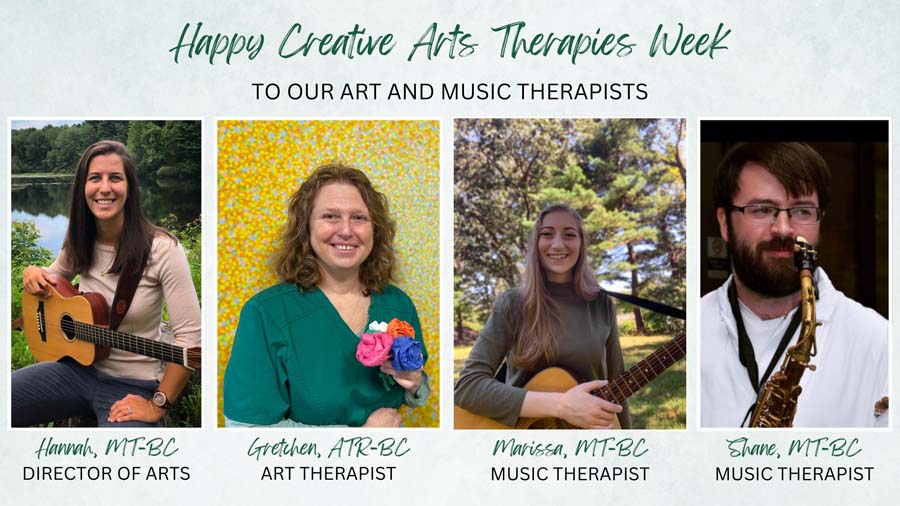
“A young lad stands!” exclaimed an individual living with dementia, as they translated the first line of their favorite song, “Tumbalalaika” during a music therapy session. In that moment, one with such limited speech prior to engaging in the music, was able to not only sing along, but translate a lyric from Yiddish to English.

As a budding music therapy student at Berklee College of Music, this became a formative experience for Hannah Righter, now the Director of Arts at Connecticut Hospice. To see firsthand the impact music can have on reconnecting individuals to the present moment – so much so that they are able to engage in ways they could otherwise not due to disease progression – was truly eye-opening.
Since then, there have been numerous studies conducted supporting the global neurological engagement that takes place even while passively listening to music (Toader et al., 2023). When combined with the strong emotional connection many have with music, this results in the ability to use music to bypass damaged areas of the brain. This is paramount for individuals diagnosed with dementia, who, through music, can connect with their loved ones in meaningful ways.

The responses evoked by the music might not always be as grandiose as regaining the ability to translate from one language to another. Sometimes, it may be as seemingly subtle as tapping to the beat or maintaining eye contact. Yet, each of these moments can be just as profound as the next. It’s these interactions that highlight the power of the arts in fostering connection, even when verbal communication becomes more difficult.
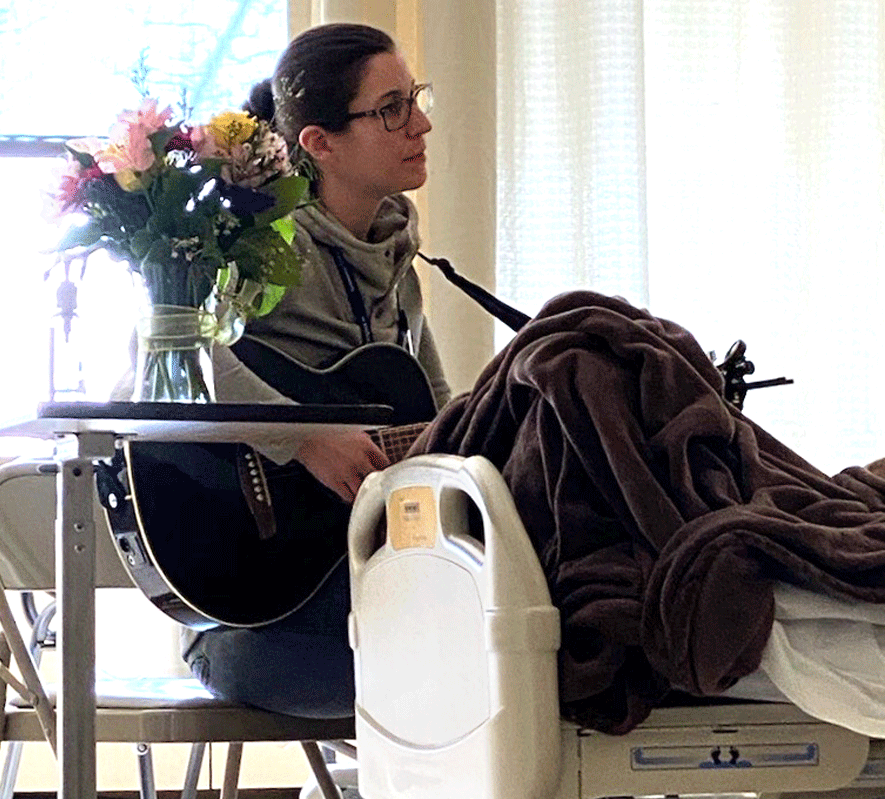
The story touched upon above is just one of many that speak to the impact the arts can have on patients receiving hospice and palliative care. At Connecticut Hospice, the integration of the arts is woven into the fabric of their care approach, ensuring that every patient and their loved ones have the opportunity to experience art, music, and other forms of creative expression. Whether it’s actively engaging in music and creating a piece of art or passively listening and watching, the arts can play a key role in fostering connection, comfort, and peace.
Connecticut Hospice can proudly celebrate its legacy as the first hospice founded in America, but its remarkable history extends beyond that. In 1979, they became pioneers in the provision of excellent end-of-life care once yet again by incorporating the arts into their interdisciplinary team approach, establishing one of the first Arts programs in hospice care. Since then, the Arts Program at Connecticut Hospice has only continued to grow, expanding its reach through a diverse team of art and music therapists, volunteers, students, and a highly skilled portrait artist.
With Creative Arts Therapies Week falling in the third week of March, it's the perfect opportunity to recognize the invaluable contributions of Connecticut Hospice’s art and music therapists, who work closely with patients and their families both at their inpatient facility and in the community. Their therapists are dedicated to enhancing quality of life for as long as life is lived. Through the power of art and music, they address goals that extend beyond artistic or musical achievements, focusing on emotional, mental, and spiritual well-being.

Whether it's using patient-preferred music to increase relaxation, collaborating with an art therapist to create a meaningful gift for a loved one, or helping patients express themselves by composing a song with a music therapist, their work promotes connection and healing. Hospice’s art and music therapists work to create a space where individuals can confront, explore, and articulate complex emotions while also finding creative ways to honor and celebrate a life lived. Ultimately, one of the most rewarding aspects of their work is helping provide patients and families with the chance to create lasting, positive memories, even in the most challenging of times.
Discover how the arts bring comfort, connection, and healing to hospice patients. Explore Connecticut Hospice’s Arts Program to see how you can support or get involved.

Volunteers are at the heart of any hospice program. In fact, the Medicare Conditions of Participation for hospice care require that five percent of all care be given by volunteers. Why would such a regulation exist? There are many reasons.
Hospice programs are designed to treat the entire family, from the time of admission through a year after the patient’s death. No one person can fulfill all of the needs of every family member, but the presence of an active volunteer program makes it much more likely that patients and families can have their pressing needs met. Volunteers are an extension of the staff, and make it possible for a hospice to do more for everyone.
Volunteers bring talents that might not be possessed by anyone on the paid staff. Whether it be hairdressing, reiki, massage therapy, gardening, or knitting, those who come to volunteer have a variety of competencies, many of which may be apart from any professional skills. It’s not uncommon to find a retired CEO that can fix things, a teacher who does massage therapy, or a former librarian who can get office work done.


Volunteers don’t have to do the everyday tasks, so they can go above and beyond for patients and visitors. One of the most popular assignments is something called a “loving whisperer”—a person who sits by a dying patient, who has no relative present, holding a hand or giving comfort in other ways. People who like to drive, and who might bring a family member who doesn’t have a car to visit, or pick up a prescription and deliver it to a homebound patient, are like gold to a stretched paid staff.

Therapy pet owners are mobbed as soon as they come off the elevator. Everyone, including the professionals working at the hospice, are happy to pet a dog with a wagging tail. The cheer they bring is hard to duplicate with humans!


Time is often a precious gift in and of itself. Volunteers may roll beds outside on a sunny day, or even just sit and listen to stories, confessions, memories, or fears. They learn to just “be”, in a rushed world where everyone has a job to do. At the end of life, the days may be short, but the minutes and hours can be long. How much better it can be to talk to a willing listener, than to watch daytime TV! These helpers are often around at times with fewer visitors, and many have the patience to simply sit in silence, or to be a cheerful face when a patient wakes up from a nap.
Many volunteers also willingly do daily tasks that free others up. One such duty is checking visitors in at the front desk. Those cheerful souls calm and comfort anxious guests, making a huge difference just with a few kind remarks. One such volunteer noted that men, in particular, are often uncomfortable in such medical surroundings, and are gratified to be greeted and recognized as grieving relatives. Sometimes they find it easier to unburden to a stranger, and volunteers are practiced at letting them do just that.

The same holds true at the bedside, where deep feelings may be expressed. One volunteer spoke of listening to a woman over the course of her stay, vocalizing gratitude for her husband coming faithfully each day for lunch. After she passed away, the volunteer was able to communicate that gratitude to the husband, who had never heard it directly from his wife. Stories like that are not unusual, and mean so much to those left behind.
What do the volunteers get in return? Most say immediately that they receive more than they give.

Many musicians have a day job doing something completely different, so they enjoy getting the chance to play for an audience. Families can connect within their own group, or even with other families, through music. Patients may be soothed, or even energized, as is the case with some suffering from dementia, by favorite songs. One man who hadn’t spoken in days, but who had been a competitive ballroom dancer, opened his eyes after his wife requested a specific number from those days, and asked “shall we dance?”. Moments like that keep volunteers coming back over and over.


Many are laypeople, but with an interest in spirituality of all kinds, and a desire to offer that to those requesting it. Even those without formal religious views can find solace in discussing some of life’s biggest questions with these dedicated helpers. In the vein of the old saying that the best way to learn something is to teach it, they feel enriched by experiencing the faith, and doubts, of others.
Many students, whether training for medical careers, doing community service, or just giving some extra time, find that they are amazed by everything that they learn while volunteering. Some say it was the most transformative part of their education. Others are moved to search for a career in hospice or a related field. Students who do technological projects may not be taking care of patients, but they are certainly exposed to the philosophy of palliative and hospice care. For those who are in medical, nursing, or paraprofessional schools, it may be very different than what they are taught in settings where curative care is the guiding principle.


Not only medical clearance, but fingerprinting (if working with patients), interviewing, and training are all mandated. Most hospices also ask that applicants wait a year after a personal loss to become a volunteer. Rather than considering that list to be a high hurdle, it should be seen as a compliment, to show that volunteers are just as important as employees, and should be vetted that way.
It’s easy now to see why volunteers are so critical to a hospice. Indeed, their passion for the mission is inspirational not only to patients and families, but to the paid staff as well. The staff not only acquire extra hands and minds to aid in their work, but are buoyed by the caring and support of those who show up faithfully to help, week after week. Some come daily, some weekly, and some seasonally, but all bring the reminder of the meaning of hospice care.
They all are clear on one thing: Hospice work for them is anything but depressing. They speak of it as “joyous”, gratifying, and rewarding. All value the human connections they find in those settings. In doing their important work, they find meaning. And they are grateful—for health, for life, and for every day. What more could a volunteer, or indeed anyone, ask?

Fashion often seizes on wearables that have been introduced for functional reasons. Take leggings, for example. First a sports-only item designed for unencumbered movement on a bike or in a gym, now people wear them for style and own several pairs. Jeans? These sturdy pants designed for laborers are now stacked in so many closets in multiple washes, lengths and cuts. Glasses too – I remember my first pair was pretty basic. Now one finds glasses frames to fit their face shape and their personal style. If you browse online for frames you can try them on virtually; it’s amazing.
This past March, I wore my first face mask. It felt strange. I decided early on that voluntarily wearing a mask would feel awkward and make me stand out in my neighborhood. I also believed that wearing one was going to protect me and other people. If other people were going to wear them (to protect me and themselves) it seemed important that we normalize mask-wearing, the sooner the better.

I was walking down the street last spring and came upon some of my friends standing and talking. Everyone stood at a distance but I was the only one wearing a mask. One friend is a surgeon who worked at a hospital where cases were rising and protocols were evolving. With his daughter at his side, he called out to me, “That mask isn’t going to do anything for you, and they can even cause harm. If everyone starts wearing masks, they’ll increase demand for N-95 masks that are needed in the hospitals. The mask you are wearing does nothing.” He gently mocked me for wearing it. I said that I’d heard that argument but also some different well-informed opinions on the efficacy of mask-wearing. He replied that I had a false sense of security with the mask and that others would too. Slowly but surely over the spring into the summer, masks became more common than not; it’s unusual to see someone without one (even my surgeon friend).
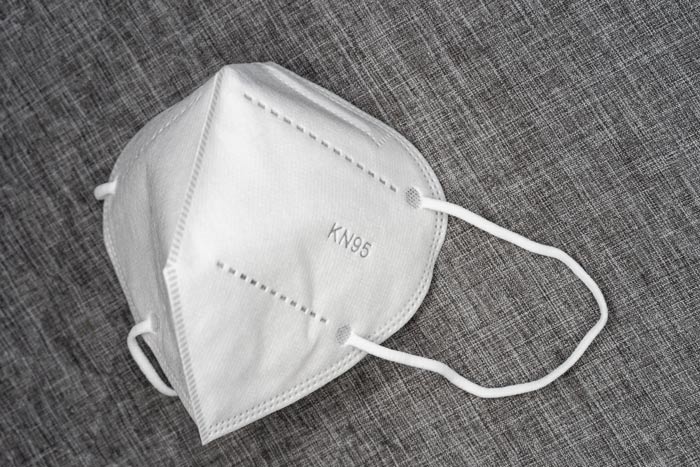
The truth is, an N-95 mask is the most effective due to the random pattern of its fibers and its electromagnetic charge to attract and trap aerosol particles. A mask made of tightly woven cotton or an ordinary surgical mask does an excellent job too, especially if two people who may be near each other are wearing them. The small amount of particles that escape one person’s mask, if they even manage to reach the other person, are filtered yet again by their mask – vastly decreasing the transmission of coronavirus particles.
Possibly the most important factor in mask-wearing is the way the mask fits. It should be ample in size, snug against the face, and in a shape that allows breathing space inside the mask. A loose mask leaks particles. This is why wearing a bandana that is open below the chin offers very little protection.
Always wear your mask over your nose, make sure your chin is covered, and keep your mask snug. Discard disposable masks, and frequently wash the cotton ones. If you need to go indoors, you can even slip a coffee filter in your mask for another layer of protection.
It may be that one day soon, we will not strictly need to wear masks, or will use them for certain situations, like at movie theaters or basketball games. One thing for sure is that right now, masks are essential. And if wearing them everywhere is not mandated by law, most institutions, including banks, hair salons and certainly healthcare settings, require them, for good reason.
Wearing a mask feels inconvenient, but seatbelts probably felt that way in 1966, right? Did you know that in the 1940s and 50s, even as scientific research demonstrated that they saved lives, many people asserted the opposite, and even cut them out of their cars? So many lives were lost before seat belts became mandatory. Let’s not make the same mistake with masks.
Small confession: I may go from reluctant user to enthusiastic wearer of masks this winter. They do a nice job of keeping my face warm. And back to fashion, lots of people have several masks, and they even think about matching the sweater they are wearing, or matching the weather. Some have straps, some ear loops, some velcro, are printed with creative patterns and colors and even political statements . . . are masks becoming a style item? After all, we wear them on our very faces! I myself have some fall colors in mind for the next ones I make. And apparently, designers and shops like Lily Pulitzer, Uniqlo, Levis, Etsy, even Louis Vuitton and Gucci – are standing by to help!!!
Sources:
Wisconsin Public Radio, The Surprisingly Controversial History Of Seat Belts September 25, 2017 read the article
New York Times, How NOT to wear a mask, April 8, 2020 read the article
New York Times, Masks Work. Really. We’ll show you How, October 30, 2020 read the article
LeviStrauss.com The History of Denim, July 4, 2019 read the article

About an hour after my father died, I wandered away from my parents’ den, where he lay in a rented hospital bed, and went outside to be by myself for a while. On the horizon of the cold dusk sky the January sunset was a deep blazing red, more vivid than I remember seeing before or since. I imagined Dad shooting through the sky like a flaming arrow, for he was straight and true. Or like the Greek sun-god Helios arcing across the firmament in his chariot, for he was like the sun to me. Or Old Testament Prophet Elijah spiraling up to heaven in his fiery chariot, for Dad had (briefly) suffered, and deserved this final reward. Or all of these things at once.


These images were felt by me instinctively, and I didn’t share them with my mother, my sister or my daughter - partly because they were so intense I didn’t feel I could speak them aloud, and partly because a little internal voice said that I might be perceived as being melodramatic or even superstitious. Dad was an atheist, besides, and an academic family such as ours generally needed provenance, logic, or science to believe such things, surely?
It turned out that we needed none of those things, and a few hours later any doubts I had of such ideas were firmly swept away. Sitting in the dark on the family porch, I was startled by a lone goose, who flew down unusually close to the house, only honking when right in front of me, and then flapped away. It felt like a visit, and I went inside to tell my family about this “amazing phenomenon” before returning outside to the still night air.
About half an hour later Mum came to join me, and literally as she stepped through the door, a chevron of geese swooped down lower than any ever had before, all honking wildly as they flapped by. This had to be a sign, right? Lo and behold, when my sister came out to look for us another half hour later, yet one more goose suddenly appeared out of nowhere to make its presence known.

We all clung to the belief that this had to mean something, because believing the geese were visiting for a reason, that they might even be Dad saying goodbye, brought us comfort in that bleak “dark night of the soul”.

Since then, half the birds of the northern hemisphere’s skies have become ‘symbols of Dad’, such is our wish to remain connected to him in as many ways as possible. My sister and I have talked about this – she lives thousands of miles away, on another continent, and yet she sees the same ‘signs’.




For me, noble hawks always seem to circle overhead when I need his strength;
bright, persistent cardinals pop up in the nearby hedgerow when I want to chat to him;
mated-for-life swans scud silently by to remind me of his marriage proposal to my mother on the second day they met (married five weeks later, they were soul mates for 60 years);
never-shy catbirds hop right up close and train their beady eye on me in the same piercing way Dad always did;
squabbling blue jays even bring back family silliness, when we were a family together;
ephemeral, iridescent hummingbirds are rare and colorful visitors to my yard, but he was rare and colorful too.
And the seminally symbolic geese always bring me right back to the seismic shift in our world on that evening, when at one moment he was alive with us and in the next he had wrenched himself away.
Accepting and allowing that he was gone, in intensely painful slow motion, was like a long difficult labor, delivering a new reality.



Why do human beings believe that signs and symbols from the natural world represent the presence of, or messages from, our loved ones after they are gone? For instance, many people believe that butterflies are deep and powerful representations of life. Butterflies are often thought to be a symbol of their departed loved ones or of eternal life, perhaps because of their metamorphosis from chrysalis to butterfly. Recently, Dmitri, a Connecticut Hospice staff member’s son, felt it was symbolic to release the 6 new butterflies from his Butterfly Garden on the site where hospice care first began in the United States.



Dragonflies are said to symbolize change and transformation, and are connected to signs from loved ones. Feathers, storms and rainbows are also often imbued with special meaning after a loss.




There are websites devoted to supporting the bereaved through the sharing of personal stories of ‘signs and symbols’ they have experienced. Click here for an example: signs of a deceased loved one
People often tell the recently bereaved to “look for signs – you’ll see them all around”, to reassure and comfort, and because they believe it to be true.
It seems that we try to hold onto someone we dearly miss by creating a physical manifestation where there is no longer a physical presence. That so many of these ‘messengers’ are animate entities of the natural world – animals, birds, insects, sometimes even flowers and trees – appears to bear this out.
It is well documented that nature has the power to bring solace and rejuvenation to us whether or not we are grieving, and it is plausible that we instinctively understand this capacity when we so readily ascribe special meaning to its creatures and its beauties.
Nick Cave writes
“The paradoxical effect of losing a loved one is that their sudden absence can become a feverish comment on that which remains. That which remains rises in time from the dark with a burning physicality — a luminous super-presence — as we acquaint ourselves with this new and different world. In loss things – both animate and inanimate – take on an added intensity and meaning”.
Nowadays, when Mum and I sit on the porch together, we sometimes talk about the ‘Great Creative Force” that connects all things. As an artist and woman of great wisdom, my mother can find symbolism and interconnection everywhere. Where once the anecdotes we heard about ‘signs’ from departed loved ones were possibly feasible, but mostly abstract, ideas, our family now knows and feels the truth of them.
We lost him but now he is everywhere.

Further resources:
To read Nick Cave's entire piece, click here: how to understand the experience of loss
To read an essay on birds and loss, visit: the birds scattering blue
What is the 'dark night of the soul'? To explore its interpretations, click here: the dark night of the soul - understanding amidst the absence of meaning
To hear the exquisitely beautiful "Dark Night of the Soul", Ola Gjeilo's composition for chamber choir, piano and string quartet (approx. 13 minutes), watch: Youtube: Dark Night of the Soul, Ola Gjeilo
Learn about and listen to catbird songs: All About Birds: Gray catbird sounds
All about Helios and how he is different from Apollo: Wikipedia: Helios

Making our patients feel special is always a major goal of the Connecticut Hospice Interdisciplinary Team. Helping our patients and family members to make the most of their time together and to make new memories is another rewarding focus of our work.
Recently our team came together creatively to help make hospice patient Catherine Simpson’s birthday a very special event for her and her family.

Knowing her birthday was approaching, Cathy’s caregivers casually asked what sort of cake she would like, and she shared that having her favorite ice cream cake was one of her final wishes. Big Y stepped in to donate a large ice cream cake, while Social Work and Arts Department staff prepared for a surprise birthday party with a twist.
Balloons decorated her room, along with a giant birthday banner, hand-painted by staff artist Karen Burgess and adorned with her favorite cat pictures.
Coming as a surprise to Cathy, arrangements had quickly been made for her to have a Zoom Party with three generations of family members who live out of state.

Sporting a tiara, and assisted with her make up by her CNA, Cathy saw her beloved sister, nieces and nephews far away in Nevada and California.
Each member of the family took it in turns to share a special memory of the patient with her. During this precious birthday “visit”, she smiled broadly and shed joyful tears. She clearly felt their love, and was able to say “I love you” to her closest family members “face-to-face” even though they are far away.



On speaking to the team later, Cathy’s sister said
“She looks so very happy. I can’t thank you enough for all the wonderful things you do and have done for my beautiful sister. I will be forever grateful”.
Permission was given to publish this story and the patient's name.

Summer is here, and the natural world is exploding with life. While so many human beings stayed at home this spring, you may imagine what a ‘field day’ plants and animals have had. Our connection to all things growing is as old as our species, and we reap a myriad of benefits when in touch with nature - rejuvenation, stress-relief, increased health, sustenance, joy, creative inspiration, to name just a few.
For those unable to get outside because of social isolation or activity-limiting illness, there are many alternative routes to those life-enhancing rewards.
In this series we will discuss why and how nature is so beneficial to us and we’ll share some resources to help you bring some of the natural world to your own environment, wherever you are.
In later installments of the series we will visit the world of trees, which we know give us improved health in ways large and small. Their ability to provide oxygen, shade, medicine, and beauty is unmatched in our planet’s flora. Later, we’ll journey to the wilderness and find out how the natural landscape can improve our wellbeing and inspire our creativity, even when we are sitting indoors.
In Part 1 we start closer to home, as we explore gardens, gardening, and the therapeutic role played in our lives by our involvement with plants.
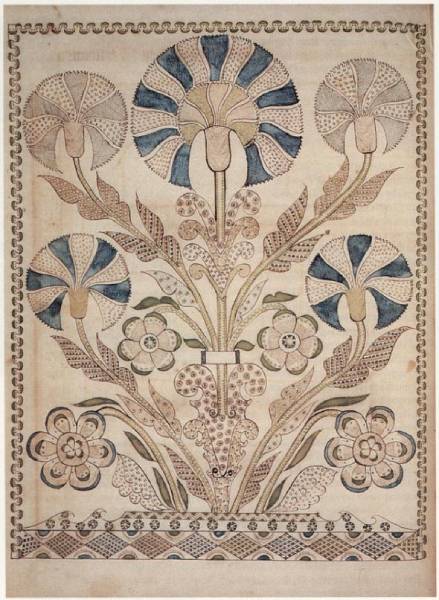

The human instinct to control our natural environment seems to have existed from our earliest days. Once we mastered the hunting and growing of ample food supplies, evidence teaches us that our ancestors began to design and plant for pleasure. Human knowledge of plant life expanded through trial and error to include nutritional, medicinal, and eventually purely aesthetic uses. When we looked at a beautiful landscape perhaps the pleasure we felt gave us the urge to try to reproduce it.


For millennia, gardens have been created as places of solace, escape, and relaxation. They have been catalysts for creativity, inspiring countless works of visual, literary and musical art. Their design is seeded in the imagination and nurtured by experiment and conditions, the only ‘rules’ being those of climate and space.
Ranging from the most grandiose and formal to a few simple containers on a sunny windowsill, there is a style to please everybody. Whether private or public, gardens can be manifestations of personal statement and cultural pride. They are sites of solitary, family, or community activity, which know no boundaries of age, geography or wealth. During times of war and, recently, pandemic, edible produce has been raised in ‘victory’ gardens, allotments, small plots and indoor pots. Anyone can garden with a minimum of material, (and most gardeners love to share or swap); very few people are immune to the enjoyment of being in one.
Before we continue, take a moment to enjoy this gallery of plants and gardens, and observe your responses to each of them:








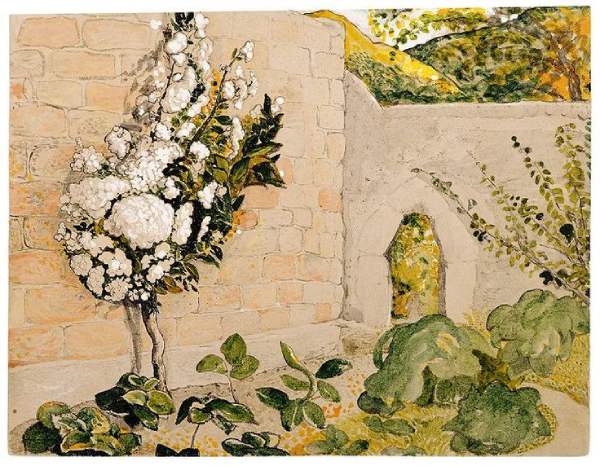


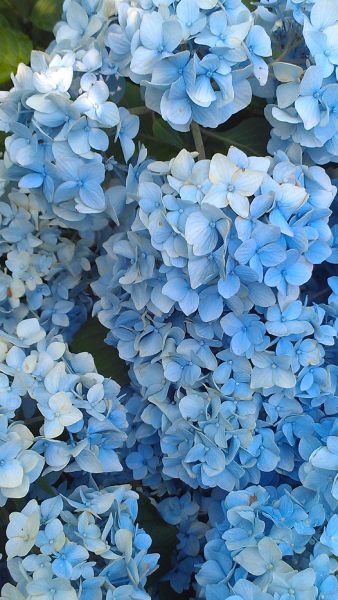



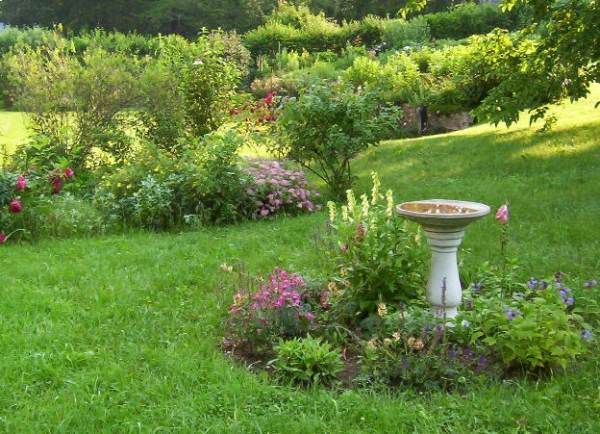






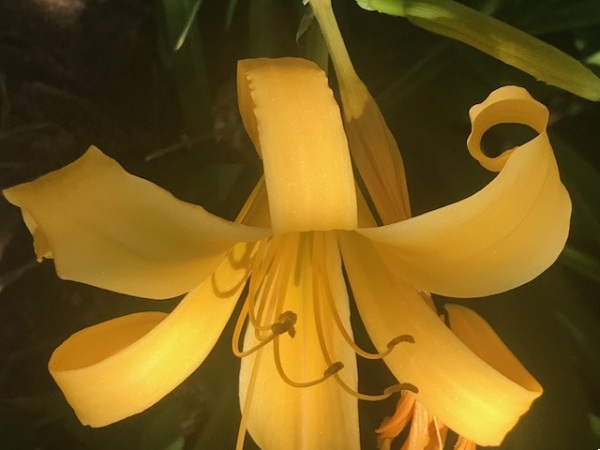




There is a quiet thrill to be found in cultivating a life force other than our own, and wonderful moments of surprise when plants enforce their own will and spring up in unexpected places. As we nurture gardens, so do they nurture us.
Beyond their cultural, historical and social importance, gardens and gardening provide profound physiological benefits. They stimulate all our senses. One or two plants in an indoor pot can do this, or a richly planted garden outdoors. We know that aromas can trigger memories, colors can affect our emotions, shape and form feed our ability to use logic and enhance memory. Likewise, certain natural sounds can reduce our heart rates, and the taste of something healthy and fresh can encourage appetite. The physical activity of gardening on any level can improve fitness and motor ability.

Because they engage all these senses, it is clear that gardens bring huge rewards. For persons with cognitive deficits or impaired motor skills, they have a particular value: – the cerebral cortex of the brain, where sensory information is processed, is stimulated by the sights, smells, sounds, tactile textures, and taste of plants and gardens. The cerebral cortex is also where motor function is controlled and voluntary movement regulated, and it is the area of the brain responsible for processing language, planning and organizing.

The physician and writer, Oliver Sacks, explains the value of gardens:
"As a writer, I find gardens essential to the creative process; as a physician, I take my patients to gardens whenever possible. All of us have had the experience of wandering through a lush garden or a timeless desert, walking by a river or an ocean, or climbing a mountain and finding ourselves simultaneously calmed and reinvigorated, engaged in mind, refreshed in body and spirit. The importance of these physiological states on individual and community health is fundamental and wide-ranging. In forty years of medical practice, I have found only two types of non-pharmaceutical “therapy” to be vitally important for patients with chronic neurological diseases: music and gardens." (from “Why We Need Gardens” in Everything in its Place: First Loves and Last Tales).
This year more than ever, many of life’s most sustaining activities have by necessity become virtual ones. While many of us may not be able to travel or experience the beauty of gardens in person, the internet can take us there with a larger number of options and more stunning videography than ever before.
The New York Botanical Garden, a National Historic Landmark and the largest Garden in any city in the United States, is a wonderful source of information, beauty, and escape. Their website offers marvelous virtual tours through their gardens, ranging from spring flowering bulbs and blossom trees to roses in high summer. Tutorials by NYBG experts can be found there and on YouTube to help you with indoor plants and outdoor flowers and shrubs. If you want to grow some of your own fresh vegetables their website also features guides especially tailored for children and beginners.
Click here to tour the gardens or watch their free tutorials: New York Botanical Garden at home
If you would like to explore some of Great Britain’s famed gardens, including Kew Gardens, National Trust sites and The Royal Horticultural Society’s Chelsea Garden Show, this collection of virtual tours is not to be missed: Enjoy virtual British gardens
Whether in real life or virtually, the pleasure we can take in gardens and gardening is available to us in every season. We observe in the life cycles of the natural world an echo of our own finite existence, but there is comfort there in abundance. The careful preparation of a plant pot or a flower bed, and the expectant anticipation of our success, feed our sense of hope. The excitement of seeing a young shoot first emerge from our soil is hope brought to fruition.

"And don't think the garden loses its ecstasy in winter. It's quiet, but the roots are down there riotous." - Rumi
Click here to read more about the the physical and mental benefits of gardens
To read a recent study comparing the health effects of natural vs city landscape click here: Experimental Study on the Health Benefits of Garden Landscape
To read about gardens in history:
As a not-for-profit, we depend on generous donors to help us provide customized services and therapies that aren’t completely covered by Medicaid, Medicare, or private insurance.
Please make a gift to help us sustain the highest standard of care.
Admissions may be scheduled seven days a week.
Call our Centralized Intake Department: (203) 315-7540.